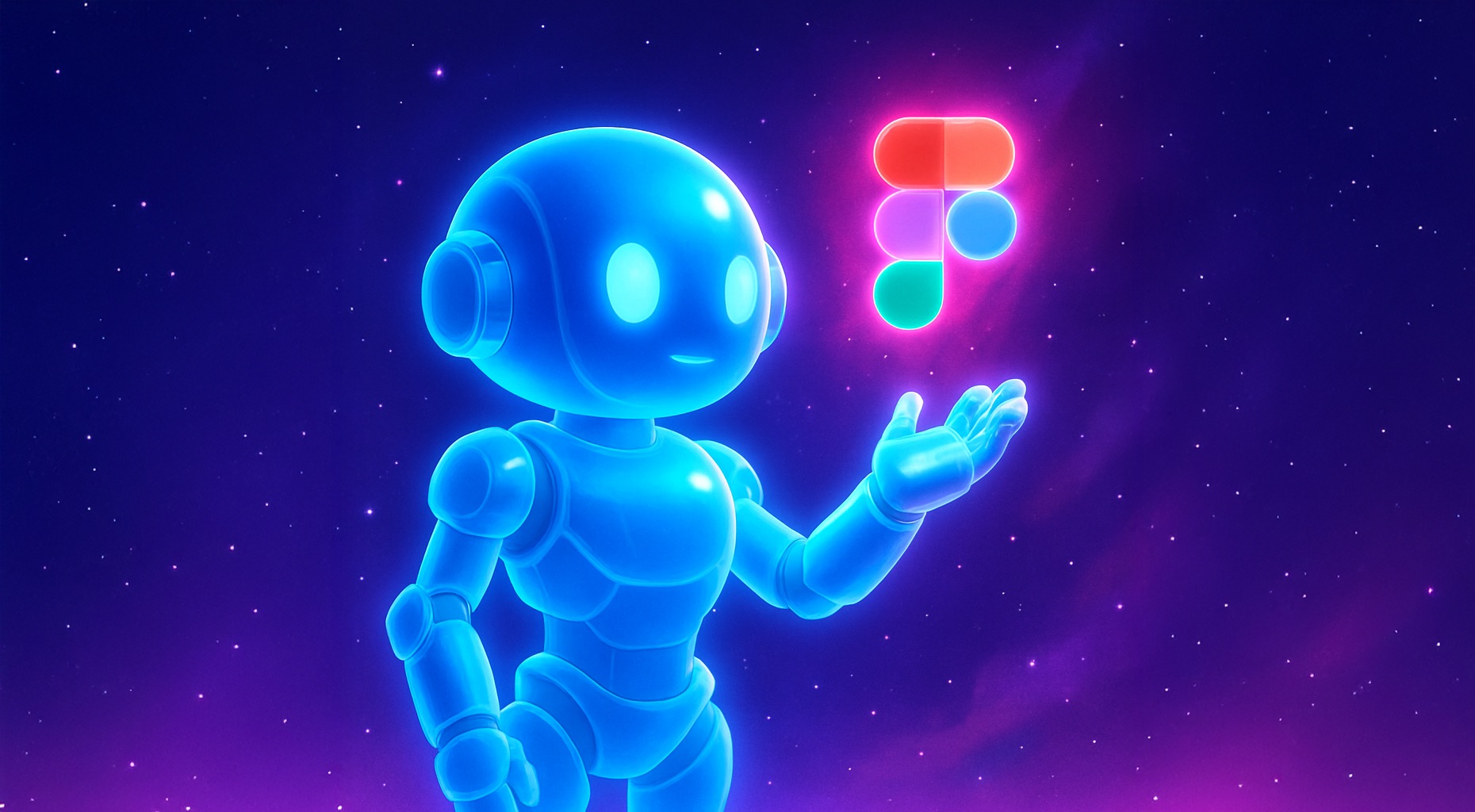How AI tools like Figma Make and the new prompt-on-canvas feature are reshaping the way designers create, iterate, and explore ideas
TL;DR
Generative design in product design is no longer science fiction. Tools such as Figma Make and Figma’s newly announced “prompt to edit directly on the canvas” are bringing AI-powered creativity straight into the daily workflow of product teams. The possibilities are exciting: faster ideation, instant design variations, automated content and accessibility improvements, and an easier way to explore visual directions. At the same time, the hype is strong, and it is important to separate what works in practice from what still requires human judgment.
The traditional design workflow
Before AI entered the picture, most design teams followed a fairly predictable process. Designers collected briefs, built mood boards, sketched rough concepts, and translated those into wireframes and static mockups. Each new variation usually meant duplicating artboards and spending hours polishing details. Visual explorations were constrained by time and resources, which meant that many possible directions never left the sketchbook. Design systems provided consistency but often limited experimentation. The result was a workflow that was structured but slow, with little room for fast iteration.
What generative design makes possible today
Generative design is changing this workflow in real and practical ways. Figma Make, for example, allows designers to generate design elements, layouts, and style variations directly inside Figma. Instead of switching between different tools, a designer can prompt inside the design file and instantly see multiple variations. Yesterday’s announcement about prompting directly on the canvas takes this one step further. You can now type an instruction on the canvas itself and see the design adapt in place. This is not only faster but also keeps the creative flow intact.
Beyond Figma, generative design tools are making it easier to explore multiple visual styles, create mood boards, and test color and typography variations without manual effort. Generating copy for buttons, tooltips, or empty states has become a natural part of the workflow. Accessibility is another area where AI is already helping, with automatic contrast suggestions and flagging of issues that used to require manual checks. Even repetitive tasks such as creating multiple component states across breakpoints can now be handled with a simple prompt.
Real world examples from my work
On Joinride.cc I recently used Figma Make to create four different theme directions: dark mode, light mode, and two accent palettes. Instead of duplicating artboards and spending hours tweaking, I generated them directly in place. The time saved was significant, but more importantly it allowed me to compare and refine live with stakeholders.
When Figma announced the new “prompt on canvas” feature yesterday, I immediately tested it by editing a voucher component. I wrote a short instruction on the canvas itself: “make this header more playful with rounded corners, pastel accents, and a soft shadow.” Within seconds I had three options, one of which required only minor adjustments. What would have taken me half an hour before was reduced to a few minutes.
Even microcopy benefitted. For a ride cancellation flow I prompted “explain ride cancellation reasons in a kind and empathetic tone.” The generated text was not perfect, but it was a solid draft that needed only slight adjustments.
Where the hype is stronger than the reality
While these tools are powerful, not everything lives up to the marketing promises. The idea of generating a complete design system with one click is not realistic. Tokens, accessibility rules, responsive behavior, and cross-platform consistency still require thoughtful human setup. Automatically generated layouts for complex dashboards or data visualizations often fail to respect hierarchy, alignment, and spacing. AI is good at producing safe templates, but unique brand voice, creative risk, and emotional resonance are still the work of human designers.
Another common issue is domain specificity. Generative tools may misunderstand context, especially in regulated industries or highly localized markets. Prompts also remain an art form: it usually takes several tries to get a usable output.
The trade offs and why humans remain central
Generative design delivers speed, but speed without control can create messy outputs. Designers still need to refine, polish, and ensure visual hierarchy. Variation is a strength of AI, but without curation it can dilute brand identity. Ownership of generated assets also remains a legal and ethical question. Above all, design fundamentals such as typography, color theory, and interaction design cannot be replaced by prompts.
What works best: a partnership between AI and designers
The sweet spot is using generative tools for early exploration and quick iterations while relying on human designers for refinement and decision making. Define your goals and brand tone before prompting, explore variations in the early stages, and then refine manually. Share early results with stakeholders to align direction, and always bring generated work back into your design system. This way AI becomes a creative amplifier instead of a shortcut that produces shallow results.
Looking ahead
The near future of generative design will likely include more advanced in-canvas tools, models that remember your brand context, and adaptive components that generate responsive variants and animations automatically. Ethical and brand-safe models trained on your own assets will help produce more aligned results. Ideally, these tools will not just create safe options but will push creative boundaries and help designers take risks while staying on brand.
Final thoughts
Generative design is here to stay, and tools like Figma Make and prompt-on-canvas show that AI can meaningfully speed up product design workflows. The key is not to treat AI as a replacement for human creativity but as a collaborator that unlocks new possibilities. Use it to explore, to iterate, and to experiment. Then apply your judgment, taste, and craft to shape outputs into something truly meaningful.


